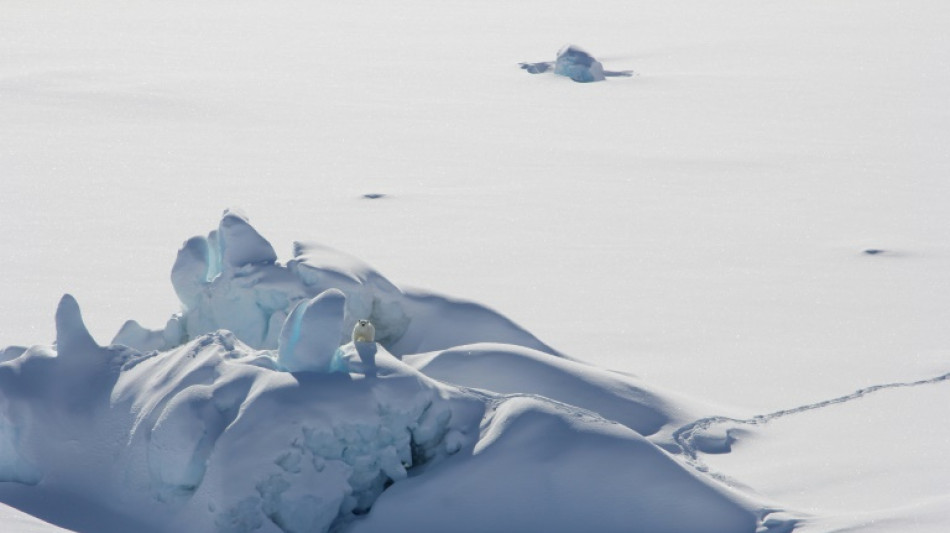
-
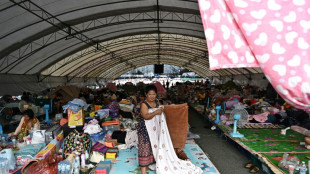 Thailand says Cambodia must announce ceasefire 'first' to stop fighting
Thailand says Cambodia must announce ceasefire 'first' to stop fighting
-
M23 militia says to pull out of key DR Congo city at US's request

-
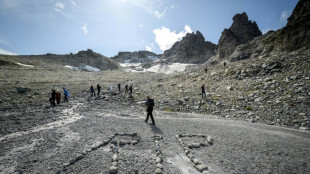 Thousands of glaciers to melt each year by mid-century: study
Thousands of glaciers to melt each year by mid-century: study
-
China to impose anti-dumping duties on EU pork for five years

-
 Nepal starts tiger census to track recovery
Nepal starts tiger census to track recovery
-
Economic losses from natural disasters down by a third in 2025: Swiss Re
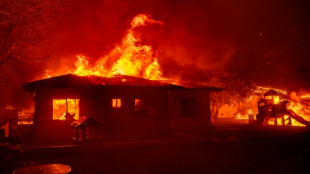
-
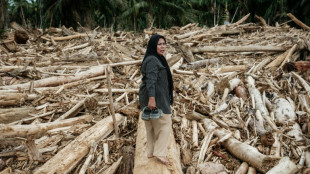 Indonesians reeling from flood devastation plea for global help
Indonesians reeling from flood devastation plea for global help
-
Timeline: How the Bondi Beach mass shooting unfolded

-
 On the campaign trail in a tug-of-war Myanmar town
On the campaign trail in a tug-of-war Myanmar town
-
Bondi Beach suspect visited Philippines on Indian passport

-
 Kenyan girls still afflicted by genital mutilation years after ban
Kenyan girls still afflicted by genital mutilation years after ban
-
Djokovic to warm up for Australian Open in Adelaide

-
 Man bailed for fire protest on track at Hong Kong's richest horse race
Man bailed for fire protest on track at Hong Kong's richest horse race
-
Men's ATP tennis to apply extreme heat rule from 2026

-
 Cunningham leads Pistons past Celtics, Nuggets outlast Rockets
Cunningham leads Pistons past Celtics, Nuggets outlast Rockets
-
10-year-old girl, Holocaust survivors among Bondi Beach dead

-
 Steelers edge towards NFL playoffs as Dolphins eliminated
Steelers edge towards NFL playoffs as Dolphins eliminated
-
Australian PM says 'Islamic State ideology' drove Bondi Beach gunmen

-
 Canada plow-maker can't clear path through Trump tariffs
Canada plow-maker can't clear path through Trump tariffs
-
Bank of Japan expected to hike rates to 30-year high

-
 Cunningham leads Pistons past Celtics
Cunningham leads Pistons past Celtics
-
Stokes tells England to 'show a bit of dog' in must-win Adelaide Test

-
 EU to unveil plan to tackle housing crisis
EU to unveil plan to tackle housing crisis
-
EU set to scrap 2035 combustion-engine ban in car industry boost

-
 Australian PM visits Bondi Beach hero in hospital
Australian PM visits Bondi Beach hero in hospital
-
'Easiest scam in the world': Musicians sound alarm over AI impersonators

-
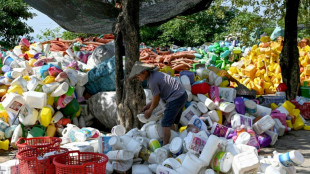 'Waiting to die': the dirty business of recycling in Vietnam
'Waiting to die': the dirty business of recycling in Vietnam
-
Asian markets retreat ahead of US jobs as tech worries weigh

-
 Security beefed up for Ashes Adelaide Test after Bondi shooting
Security beefed up for Ashes Adelaide Test after Bondi shooting
-
Famed Jerusalem stone still sells despite West Bank economic woes
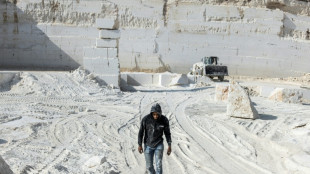
-
 Trump sues BBC for $10 billion over documentary speech edit
Trump sues BBC for $10 billion over documentary speech edit
-
Chile follows Latin American neighbors in lurching right

-
 Will OpenAI be the next tech giant or next Netscape?
Will OpenAI be the next tech giant or next Netscape?
-
Khawaja left out as Australia's Cummins, Lyon back for 3rd Ashes Test

-
 Australia PM says 'Islamic State ideology' drove Bondi Beach shooters
Australia PM says 'Islamic State ideology' drove Bondi Beach shooters
-
Scheffler wins fourth straight PGA Tour Player of the Year

-
 Security beefed up for Ashes Test after Bondi shooting
Security beefed up for Ashes Test after Bondi shooting
-
Wembanyama blocking Knicks path in NBA Cup final

-
 Amorim seeks clinical Man Utd after 'crazy' Bournemouth clash
Amorim seeks clinical Man Utd after 'crazy' Bournemouth clash
-
Man Utd blow lead three times in 4-4 Bournemouth thriller

-
 Stokes calls on England to 'show a bit of dog' in must-win Adelaide Test
Stokes calls on England to 'show a bit of dog' in must-win Adelaide Test
-
Trump 'considering' push to reclassify marijuana as less dangerous
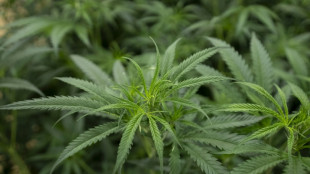
-
 Chiefs coach Reid backing Mahomes recovery after knee injury
Chiefs coach Reid backing Mahomes recovery after knee injury
-
Trump says Ukraine deal close, Europe proposes peace force

-
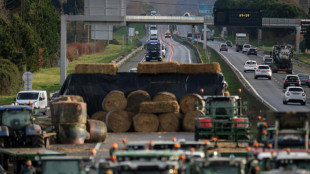 French minister urges angry farmers to trust cow culls, vaccines
French minister urges angry farmers to trust cow culls, vaccines
-
Angelina Jolie reveals mastectomy scars in Time France magazine

-
 Paris Olympics, Paralympics 'net cost' drops to 2.8bn euros: think tank
Paris Olympics, Paralympics 'net cost' drops to 2.8bn euros: think tank
-
Chile president-elect dials down right-wing rhetoric, vows unity

-
 Five Rob Reiner films that rocked, romanced and riveted
Five Rob Reiner films that rocked, romanced and riveted
-
Rob Reiner: Hollywood giant and political activist


Scientists find new population of polar bears in sea-ice free region
Polar bears face an existential threat from the rapid decline of Arctic sea ice, which they rely on as platforms to hunt seals.
But in a new study, scientists have identified an isolated subpopulation of polar bears in Southeast Greenland that instead make use of freshwater ice pouring into the ocean from the region's glaciers, suggesting this particular habitat is less susceptible than others to climate change.
Their findings, described in the journal Science on Thursday, open up the tantalizing possibility that at least some pockets of the species might be able to survive further into this century, when Arctic sea ice is expected to disappear completely during summer months.
"One of the big questions is where in the Arctic will polar bears be able to hang on, what we call 'persist,'" first author Kristin Laidre, a polar scientist at the University of Washington and Greenland Institute of Natural Resources told AFP.
"I think that bears in a place like this can teach us a lot about where those places might be."
Laidre and colleagues first spent two years interviewing Inuit subsistence hunters who provided input and ecological knowledge, including harvest samples for analysis.
They then began their own field work, which lasted from 2015 to 2021, in a harsh region that was long understudied because of its unpredictable weather, heavy snowfall and jagged mountains.
- Hemmed in -
Each year, the team would spend one month in springtime, staying in the nearest settlement Kuummiit, which is a two-hour helicopter ride from where the bears live. Fuel depots had to be staged along the route in advance down the coastline, creating a hopskotch-like commute to work.
The team tagged the bears with satellite tracking devices, and collected genetic samples by either capturing bears or firing biopsy darts into their rumps.
Thought to number a few hundred individuals, "they are the most genetically isolated population of polar bears anywhere on the planet," said co-author Beth Shapiro, a geneticist at the University of California, Santa Cruz and investigator at the Howard Hughes Medical Institute, in a statement.
"We know that this population has been living separately from other polar bear populations for at least several hundred years."
Unlike their cousins, the Southeast Greenland polar bears were found to be homebodies, seldom straying far to hunt.
Their isolation arises from the geography: they live in a complex landscape of fjords on the very edge of their range on the southern tip of Greenland, well below the Arctic circle, with nowhere to go.
To the west there are an enormous set of mountains and the Greenland Ice Sheet, and to the east the open water of the Denmark Strait all the way to Iceland. They also have to contend with a rapid current that flows southward along the coast.
"We see that when they get caught in this current they jump off the ice and they walk back home to their fjords," said Laidre. The team found that some of the tracked bears accidentally caught in this situation had to trek more than a hundred miles back home.
- Climate refuges? -
While sea ice provides hunting platforms for most of the Arctic's roughly 26,000 polar bears, the Southeast Greenland bears have access to sea ice for only four months, between February and late May.
For the remaining eight months they rely on chunks of freshwater ice breaking off the Greenland Ice Sheet in the form of marine-terminating glaciers.
"These types of glaciers do exist in other places in the Arctic, but the combination of the fjord shapes, the high production of glacier ice and the very big reservoir of ice that is available from the Greenland Ice Sheet is what currently provides a steady supply of glacier ice," said another co-author Twila Moon of the National Snow and Ice Data Center in a statement.
There remains much to study about the Southeast Greenland polar bears. Measurements show the adult females are a little smaller than average and they appear to have fewer cubs, but it's hard to infer much about what that means in the absence of long term data.
Laidre is keen to not oversell the study as one of hope. Polar bears -- which in addition to being iconic in their own right are also a vital resource for indigenous people -- aren't going to be saved without urgent climate action.
But this population might have a better shot, and there are similar areas with marine-terminating glaciers on other parts of Greenland's coast as well as the island of Svalbard that might become small-scale climate refugia.
"We as a community need to look at places like this and ask ourselves, is this a place where we might be able to have some small numbers of polar bears persisting in an ice-free Arctic?" said Laidre.
L.Hussein--SF-PST



